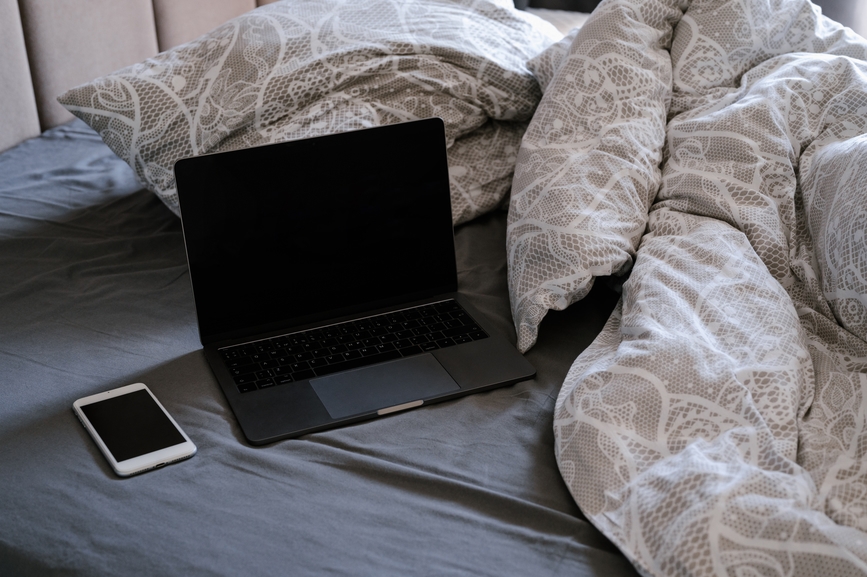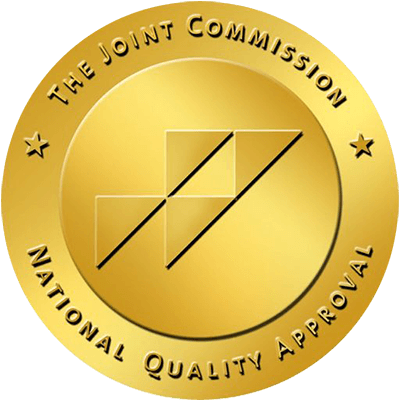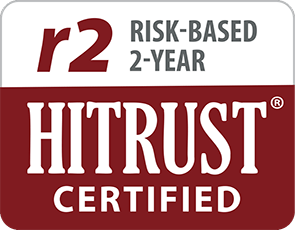Written by Ashley Kane,
Brightside Health
9 Minute Read

Medically reviewed by:
Conor O’Neill, PHD
Assoc. Director of Therapy
10 Minute Read

Does porn affect mental health? Pornography and depression often show up together in online searches, therapy sessions, and personal struggles.
While some people use porn as a coping mechanism, others find it intensifies feelings of shame, isolation, or low self-worth.
Is porn bad for your mental health? Can porn make you depressed? The relationship is complex—what’s helpful for one person can be harmful for another, depending on mental health, values, and viewing habits.
In this article, we explore the scientific evidence linking porn use with depression, clarify risk factors, and offer actionable steps to protect your mental well-being.
Is Porn Bad for Mental Health?
Watching sexual imagery is not new, but streaming platforms and smartphones have turned on‑demand porn into a twenty‑four‑hour option.
Is watching porn bad for mental health? Can porn cause depression? What about a possible link between pornography and anxiety?
Large observational studies now track viewing habits across millions of devices and consistently find that higher frequency correlates with greater depressive symptoms, impaired self‑esteem, and relationship dissatisfaction.
However, causation remains complicated because personal values, cultural background, and existing mental‑health conditions all shape whether a clip feels liberating or shame‑inducing.
Experimental designs further muddy the waters by showing that brief exposure can temporarily boost mood if people already hold sex‑positive attitudes, underscoring the importance of context when discussing porn and mental health.
Pornography Consumption Statistics
While taking a look at the link between porn and depression, it’s important to understand global statistics and trends in pornography consumption.
Global Trends in Digital Porn Use
Reliable analytics firms estimate that porn sites receive more monthly traffic than Netflix, Amazon, and Twitter combined.
In 2024 alone, over ninety billion videos were streamed worldwide, with the average visitor spending eleven minutes per session.
During pandemic lockdowns, those numbers spiked by twenty‑five percent, mirroring the simultaneous rise in mood‑disorder diagnoses.
Demographic Differences
Men aged eighteen to thirty search for explicit content most often, but the fastest‑growing segment is women over thirty‑five.
Researchers believe shifting cultural norms and easier mobile access account for the trend.
Notably, studies show that when women report problematic use, depressive severity tends to be higher than in their male counterparts, suggesting a unique gender vulnerability that clinicians should monitor.
How Pornography and Depression Are Related
Let’s now take a look at how mental illness and porn may be linked.
The Dopamine Roller Coaster
How does porn affect dopamine, the brain’s reward messenger? Each novel video triggers a burst of dopamine.
Repeated spikes desensitize receptors so that ordinary pleasures feel flat and the viewer seeks stronger stimulation, a process called tolerance that mirrors substance addiction and erodes motivation.
Over time, this reward deficit parallels the anhedonia common in major depressive disorder, where nothing seems enjoyable anymore.
Increased Social Isolation
Long sessions spent alone with a screen reduce opportunities for real‑world intimacy, friendship, and outdoor activity.
Fewer face‑to‑face connections mean fewer protective factors, such as belonging and emotional support, both of which buffer against depression.
Perfectionistic Body Comparisons
Actors are often filtered, surgically enhanced, and portrayed as eternally willing.
Viewers who internalize these unrealistic standards may feel physically inadequate or unlovable, intensifying low self‑worth and negative body image, two well‑documented pathways into depressive thinking.
Want to speak 1:1 with an expert about your anxiety & depression?
Porn and Its Impact on Romantic Relationships
Pornography consumption can also have a negative impact on romantic relationships in several ways.
Expectations and Communication
Couples counseling reports reveal that partners often misinterpret porn consumption as rejection.
When usage patterns remain secret, trust erosion follows, which is a potent depressogenic stressor for both individuals.
Conversely, transparent dialogue about boundaries, fantasies, and frequency predicts higher relationship satisfaction, emphasizing communication, not porn per se, as the determinant of outcome.
Sexual Satisfaction and Attachment Security
Porn offers endless novelty that real relationships cannot match.
Overreliance can lead to arousal conditioned on specific visual cues, making in‑person intimacy less stimulating and sparking fears of inadequacy.
Attachment research shows that people with anxious attachment who consume high‑intensity content tend to experience sharper spikes in depressive mood after partnered sex, because perceived performance gaps reinforce abandonment fears.
Why Does Porn Cause Depression and Anxiety?
But how does pornography cause depression and anxiety? How are pornography and mental health negatively linked? Let’s take a look at several contributing factors.
Shame and Moral Incongruence
Why does porn cause anxiety for some but not others?
When personal or religious beliefs label pornography as wrong, every viewing session may spark guilt.
That internal conflict elevates stress hormones, reinforces negative self‑talk, and fosters secrecy, creating fertile ground for depression.
Hyperarousal and Sleep Disruption
Late‑night bingeing overstimulates the sympathetic nervous system and delays melatonin release.
Chronic sleep debt impairs prefrontal‑limbic communication that governs emotion regulation, increasing the likelihood of irritability and mood swings.
Fear of Discovery
Hiding browsing history or worrying a partner will find out keeps the amygdala—our alarm center—on alert.
Persistent vigilance feeds generalized anxiety and undermines calm connection, breeding relational conflict that further burdens mood.
Factors to Consider When Assessing the Impact of Pornography on Mental Health
When assessing the impact of pornography on mental health, several factors can be taken into consideration.
Viewing Frequency and Duration
Daily exposure or marathon sessions pose more risk than occasional clips.
Meta‑analysis shows a dose–response curve: people in the highest viewing quartile are fifty‑seven percent more likely to screen positive for moderate to severe depression than those in the lowest quartile.
Age of First Exposure
The younger a person starts, the more brain development overlaps with explicit content.
Adolescents may encode distorted sexual expectations that later complicate adult relationships and mental health, with early exposure before age thirteen doubling the odds of compulsive use in adulthood.
Type of Content Consumed
Violent or non‑consensual themes correlate with greater aggression and distress.
Ethical, realistic content appears less harmful, illustrating that not all porn affects mental health equally and that cinematic context matters.
Avoiding Negative Mental Effects of Porn Abuse: Signs to Watch Out For
With the negative link between pornography and mental health, there are several important signs to look out for.
Escalating Consumption
We need more extreme or longer videos to achieve the same level of arousal, which indicates tolerance.
Tolerance often precedes compulsive use and can erode everyday motivation, causing hobbies and friendships to fade, a known gateway to depressive spirals.
Interference With Daily Life
Missing work, canceling social plans, or skipping sleep to watch porn suggests functional impairment.
Depression and porn frequently reinforce each other once responsibilities slide, highlighting the importance of early action.
Difficulty Controlling Use
Repeated unsuccessful attempts to cut back reflect a loss of autonomy.
Feelings of helplessness may convert into the hopelessness characteristic of clinical depression, warranting professional intervention.
Pornography Addiction Versus Compulsive Sexual Behavior Disorder
What about the link between porn addiction and depression? Psychiatry now distinguishes between casual high use and clinically significant compulsive sexual behavior disorder, which affects three to six percent of adults.
Diagnostic criteria include failed attempts to reduce use, continued engagement despite consequences, and significant distress.
Most scholars avoid the term porn addiction because neurochemical signatures differ from those of substance dependence, yet the functional impairment and mood comorbidity can be just as severe.
Treatment Options for Depression Linked to Pornography
There are several types of treatment options available for those suffering from depression linked to pornography consumption.
Cognitive‑Behavioral Therapy
CBT helps identify thought patterns such as “Porn is my only stress relief” and replaces them with balanced perspectives while training alternative coping skills for anxiety and low mood.
Randomized trials show a forty‑percent reduction in viewing time after twelve sessions, accompanied by marked drops in depressive scores.
Medication Management
Selective serotonin reuptake inhibitors, such as Zoloft for depression, can lift baseline mood, making it easier to resist urges.
In some cases, adjuncts such as gabapentin address anxiety and insomnia that drive late‑night viewing, though medication alone rarely resolves compulsive patterns.
Mindfulness‑Based Relapse Prevention
Mindfulness teaches users to observe cravings without acting, shortening urge duration from eight minutes to three on average in pilot studies.
Daily ten‑minute practices correlate with sustained mood improvement and decreased shame.
Digital Well‑Being Strategies
Using website blockers during vulnerable hours, disabling autoplay, and scheduling screen‑free evenings reduce impulsive clicks.
Coupling limits with rewarding offline activities restores dopamine balance and rebuilds natural sources of pleasure.
Support Groups and Couples Therapy
Sharing experiences normalizes struggle and reduces isolation.
For partners, open communication rebuilds trust and creates joint goals for healthy intimacy, both predictive of lower relapse rates and higher life satisfaction.
Take the Brightside Depression Test Today
If you’ve ever wondered whether your porn habits are affecting your mood—or if your low energy, sleep changes, or motivation dips might be signs of depression—Brightside can help.
Our free, clinically validated depression test gives you a personalized snapshot of your symptoms in under five minutes.
You’ll receive instant, confidential results, along with guidance on whether treatment could help, for example, gabapentin for depression.
Brightside’s expert providers offer judgment-free, science-backed care, all from the comfort of home.
Want to speak 1:1 with an expert about your anxiety & depression?
Does Porn Make You Depressed? Key Takeaways
Heavy, value‑conflicted, or escalating porn use can erode reward pathways, deepen isolation, and heighten shame—conditions ripe for depression and anxiety.
Moderation, mindful consumption, and early intervention protect mental health, and professional guidance accelerates recovery when habits turn compulsive.
FAQs
Do people with depression watch more pornography?
Research suggests a bidirectional link.
People feeling lonely or hopeless may turn to porn as a coping mechanism, while heavy viewers can experience worsening mood.
Does porn cause anxiety?
Pornography can trigger anxiety when viewing conflicts with personal values, disrupt sleep, or spark fear of discovery.
What is the relationship between self‑esteem and pornography consumption?
Frequent viewers often report lower body satisfaction and self‑esteem, especially if they compare themselves to performers.














